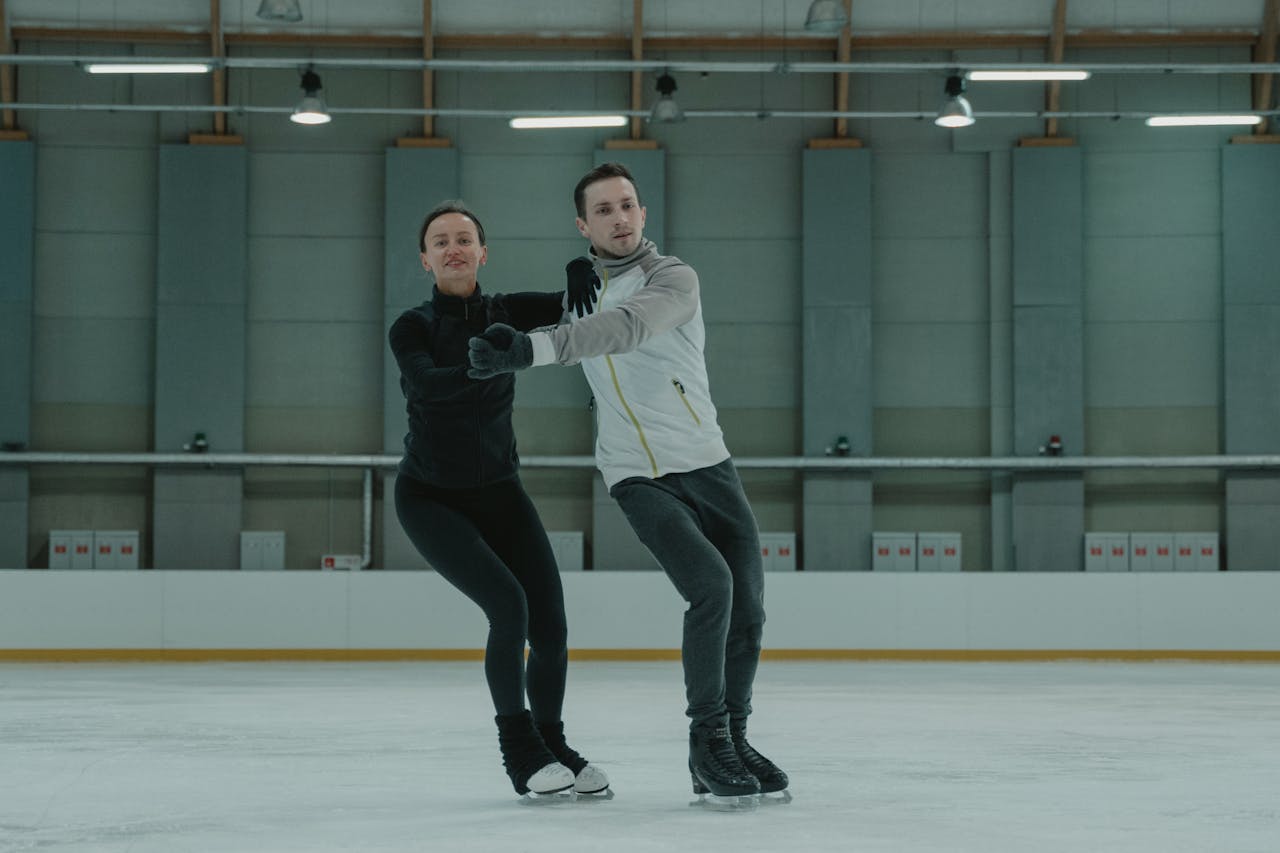Ice skating—whether for figure skating or ice hockey—is a physically demanding sport that requires agility, strength, and endurance. The constant jumping, spinning, rapid direction changes, and forceful stops put tremendous stress on the knees, hips, and lower back. In ice hockey specifically, collisions and body checks add another layer of physical impact, often leading to injuries such as groin strains, hip labrum tears, and spinal issues. Over time, these repetitive movements and high-impact actions can lead to chronic pain and injuries that hinder performance and recovery.
While traditional treatments like physical therapy, rest, and pain medication are common, many skaters are exploring cold laser therapy (low-level laser therapy, LLLT) as a way to manage pain and accelerate healing—without invasive procedures or long recovery times.
Why Ice Skaters Are Prone to Knee, Hip, and Back Injuries
1. Knee Joint Stress and Overuse Injuries
- Patellar Tendonitis (Jumper’s Knee) – Repeated takeoffs and landings in jumps place excessive strain on the patellar tendon, leading to inflammation and pain below the kneecap.
- Meniscus Tears – Deep knee bends, pivots, and unexpected falls can cause tears in the knee’s cartilage, resulting in swelling and stiffness.
- Osteoarthritis – Years of impact from skating can wear down cartilage, leading to chronic joint pain and stiffness.
2. Hip Labral Tears and Groin Strains
- The powerful strides required in hockey and the extreme hip rotation in figure skating put excessive stress on the hip joint and surrounding muscles. Over time, this can lead to hip labrum tears, which cause pain, clicking, and limited mobility.
- Tight hip flexors and adductor strains are also common due to the force needed to push off the ice and maintain balance.
3. Lower Back Strain and Compression Injuries
- The arching and twisting required for spins, lifts, and sharp turns can strain the lumbar spine, leading to chronic back pain or even herniated discs.
- Hockey players are especially prone to facet joint inflammation due to the forward-leaning stance required on the ice.
How Cold Laser Therapy Helps Ice Skaters Recover Faster
Cold laser therapy is a non-invasive treatment that uses light energy to stimulate tissue repair, reduce inflammation, and improve circulation. It has been used by athletes in high-impact sports to relieve pain and enhance recovery.
Eileen, who purchased the Handy Cure Low-Level Laser for her husband, shared their experience:
“My husband has suffered for years from muscle pain in his shoulders, knees, ankles, thumbs, and neck. He tried various treatments and medications with little improvement, but as a last resort, he tried cold laser treatment at the doctor’s office. It gave him relief right away with no side effects. His doctor recommended getting a machine for home use since he had so many painful areas. Since his purchase and regular use, he has improved dramatically. We both highly recommend this treatment as an affordable, easy-to-use, and non-toxic solution with no side effects.” Eileen M.
Key Benefits of Cold Laser Therapy for Skaters
- Reduces Joint and Tendon Inflammation – Cold laser therapy helps calm down inflamed tissues, reducing swelling and stiffness in overused knees, hips, and lower back.
- Accelerates Soft Tissue Healing – By stimulating cellular energy production (ATP), laser therapy repairs microtears in muscles, tendons, and ligaments, speeding up recovery from falls, strains, and overuse injuries.
- Increases Blood Flow and Oxygenation – Improved circulation helps flush out toxins from injured areas and delivers nutrients that aid in tissue regeneration.
- Relieves Nerve Pain and Sensitivity – For skaters dealing with sciatica, hip impingement, or chronic back pain, laser therapy helps reduce nerve irritation and improve mobility.
- Non-Invasive and Drug-Free – Unlike cortisone injections or painkillers, cold laser therapy has no side effects and can be used as often as needed to manage discomfort.
What Science Says: Can Cold Laser Therapy Really Help?
A study published in PMC found that low-level laser therapy significantly improved pain and function in individuals with knee osteoarthritis and musculoskeletal injuries. The research supports its effectiveness in reducing inflammation, joint stiffness, and recovery time—making it a valuable tool for skaters dealing with repetitive stress injuries.
How to Use Cold Laser Therapy for Skating Injuries
To maximize recovery, cold laser therapy should be used consistently as part of a skater’s injury management routine.
- For knee pain: Apply directly over the patellar tendon or joint line for 5–10 minutes per session.
- For hip injuries: Focus on the front and side of the hip joint, especially if treating a labrum tear or tight hip flexors.
- For lower back pain: Use the laser over the lumbar spine and surrounding muscles to relieve nerve compression and muscle tightness.
- For post-skating recovery: Apply after training to reduce soreness and inflammation from intense practice sessions.
A Valuable Recovery Tool for Ice Skaters
Ice skaters push their bodies through repetitive high-impact movements, making them vulnerable to chronic pain and joint stress. While rest, physical therapy, and strength training are essential, cold laser therapy offers an effective, non-invasive way to speed up healing and manage pain—whether it’s for knee injuries, hip pain, or lower back strain.
For those looking for an at-home recovery solution, the Handy Cure Low-Level Laser provides a safe and easy-to-use option that allows skaters to take control of their recovery without relying on medications or frequent doctor visits.
If you’ve experienced skating-related injuries, what has helped you recover the most? Let’s keep the conversation going.
References
Morimoto, Y., Saito, A., & Tokuhashi, Y. (2013). Low level laser therapy for sports injuries. Laser therapy, 22(1), 17–20. https://doi.org/10.5978/islsm.13-or-01
